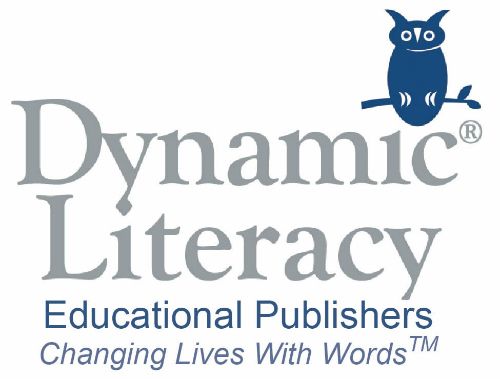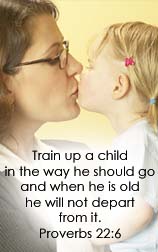
Tabitha is at an age where I want to make sure she is really understanding words. She has been reading since she was 2 1/2 years old, and has been steadily reading harder and longer books. Currently, at 8 years old, she shocked both her dad and I by zinging through the entire Harry Potter series in 2 1/2 months. Our concern however, is that she isn't quite comprehending everything because of not knowing all the vocabulary. I want her to continue reading what she enjoys, but I want to make sure her vocabulary knowledge is where it should be. When the opportunity presented itself through the Schoolhouse Review Crew to review WordBuild: Foundations, Level 1 from Dynamic Literacy I thought it would be a great way for her to work on vocabulary in a fun way.

I thought WordBuild: Foundations would be a fun change of pace for Tabitha in her language arts time. The program is meant to be used 5 days a week, for only 15 minutes per session. Another aspect of the program that caught my eye was that there wasn't a lot of writing each day. I figured that would be a big plus on Tabitha's part.
We received the Combo Edition which included a Teacher Edition and two Student books, the Basics Student Activity Book and the Student Activity Book. These books are designed for children in 2nd through 5th grade (or remedial work in grades 5-9).
The Teacher Edition is chock full of information. You will find an introduction and "How to Use this Book" section before getting into the lessons. This explains all the benefits in using WordBuild, and a brief overview of the features of the Teacher Edition and the Student Activity book. Section One and Section Two both give page-by-page lesson helps, tips, and answer keys, which follow right along with the Student Activity books. After every 6 weeks a Periodic review and Assessment is provided. The Teacher Edition concludes with two appendices. Appendix A is a listing of 947 compound words. Appendix B is a comprehensive assessment.
Here is a quick look at one of the double page spreads in the teacher manual. This is for the Foundations Level 1 Book (the pages that go with the Basics book are slightly different). Each page has a small copy of the student page which includes the answers. Beside each of these answer keys, you will find teacher boxes. On Days 1, 2, 3, and 5 these are titled: "Teach," "Complete," and "Discuss." There are suggestions for questions to ask the child and how to explain answers in the "Teach" box. In the next step, "Complete," the teacher is to tell the children to complete the activity, along with reminding them of the meaning of the affix. After the child finishes the page, it is time to discuss the answers. For the Day 4 lesson, there is only one box, which is titled, "Still Searching," which makes a lot of sense as it is for the Word Search page.

The Basics Student Activity book is a short, 20 page introductory book where the student will play with words, starting with compound words and moving into simple prefixes and suffixes. With starting with compound words, children learn that we can have fun with words and manipulate them. They also see how meaning can change based on the surroundings. In the teacher manual, there are great discussion points about the words, which really get the children thinking about these words. Additionally, there is a template to make word cubes that can be played with to form compound words.
After playing with compound words for 8 pages the remainder of the book focuses on affixes. The child is to use the one base word and add the suffix and/or prefix by using the context clues.
She did enjoy working on these pages. I had her complete the page independently, then we went over it together, following the directions in the teacher manual.
The work the children complete in the Foundations, Level 1 Basics Book prepares them for the work in the Foundations, Level 1 Book. Each week follows the same routine.
A student will start the week with the Prefix Square. They will take the affix that is in the middle square and add it to the word parts around the outside squares. As they form new words, they try to come up with the meaning of the word by thinking about what the affix means and what the definition for the base word is.
On Day 2 the child will read the definition of each word, add the affix to it, and write down the new definition. After that, they will write a sentence in which the meaning of the new word is clear and in context.
Day 3 brings the fun Magic Square activity, which is really a simple definition match made fun and self-correcting with a magic square. If the rows and columns don't all add up to the same number, they know they have the answer wrong. Additionally, there is 1 extra definition each week that does not have a word match. So, the children have to be paying attention.
Day 4's activity is a word search. For this day, a list of words using the affix is given and the child has to find them in the puzzle. This is usually a big hit in our house.
Day 5 is the Comprehension Booster activity. The student is to fill in the blanks in the sentences using the word bank on the bottom of the page.
For each affix, the child will complete each of the above activities.
Tabitha did struggle a bit with the first two days of lessons each week. Part of the problem was not quite knowing what the base word meant at times. Then, there were times when the word resulting from adding the affix, didn't really make sense. We were constantly looking up the words in the dictionary to make sure we understood what the word meant. Yes, the answers are in the Teacher Edition, but I wanted Tabitha to understand where the meaning was coming from. For example, one that really stumped Tabitha was "Underbrush." To her, a brush means something to brush one's hair. So we had to look up what brush was and how it is different that underbrush. Really, the dictionary we were using, didn't have much of a difference in these meanings. Don't get me wrong, I think it is important that she learn these skills, I think it was just a bit much for her at her age.
There did end up being a bit more writing than she was comfortable with too. Day 1 requires her to write out the definition. There are only 8 words to define, so I didn't feel this was too much for her. For the Affix Adder on Day 2 she needs to write the definition plus think up and write a sentence for 10 words. The directions do say they don't have to finish them all. However, I wanted to make sure she worked through them all so she would be prepared for the Magic Square and the Comprehension Booster. I'm thinking I will have her work on every definition and come up with a sentence, but not have her write every sentence.
Another concern we had was when a meaning for a word was given on the first day in the prefix square, but then a different meaning was used on the last day in the Comprehension Booster fill-in-the-blank activity. The definition for the word "overview" was given as, "to see from above." However, this is the way the sentence used it, "The teacher's clear overview of what we will be studying helps us learn." This sentence uses the dictionary definition we found, but it doesn't represent the definition we learned on Day 1. Again, we were able to work our way through it, but it was a bit frustrating and confusing.
Tabitha has said she enjoys doing the pages for Days 3, 4, and 5. However, Day 1 and Day 2 are a bit much for her right now. All of the pages she likes have less writing, so I can understand her feelings. I told her we would put it away for the summer and bring it back out next school year when she is a bit older. Personally, I really like the book, even though those few things had frustrated us. I like that she gets to play with the words and actually gets to understand where the meaning comes from. However, I don't want her to be frustrated, and in tears because she can't figure out a meaning or has too much writing, so that is why I am going to give her a break.
I do think Dynamic Literacy: Foundations is a fun way to build vocabulary. However, 2nd grade might be a little young for some children.
You can find Dynamic Literacy on Facebook, Twitter, and Pinterest.
My fellow Crew Mates had the opportunity to choose between Foundations Level 1, Elements Level 1 Set (which includes a computer game), and WordBuildOnline to review. You can check out their reviews by following the link below.











Those sound like some great learning activities. Sounds like the kids learned a lot.
ReplyDeleteOh wow, I think it's amazing that she could read at 2 1/2. Abby is 7 and is struggling with the desire to read but once I get her interested in a book, she hangs in there. I wish she was self motivated to read.
ReplyDeleteShe's a young reader, and probably because you've done such a good job with focusing on it. I am so interested in your work with your kids.
ReplyDeleteThis looks like a great program. I need this for my daughter, she struggles with her reading, maybe this would help.
ReplyDeleteThis is pretty great! Thanks for sharing!
ReplyDeleteI think it was smart of you to set it aside and wait a little bit when it might be more suited to her.
ReplyDeleteReading at 2 1/2 is fantastic. It's so important to get kids reading from an early age.
ReplyDeleteThis sounds like a great reading program! Will have to keep in mind for referring my homeschool friends that are looking for a curriculum like this.
ReplyDeletesuch a great way to teach the children thanks for sharing.
ReplyDeleteI am the search of great activity books this summer. These sounds great.
ReplyDelete